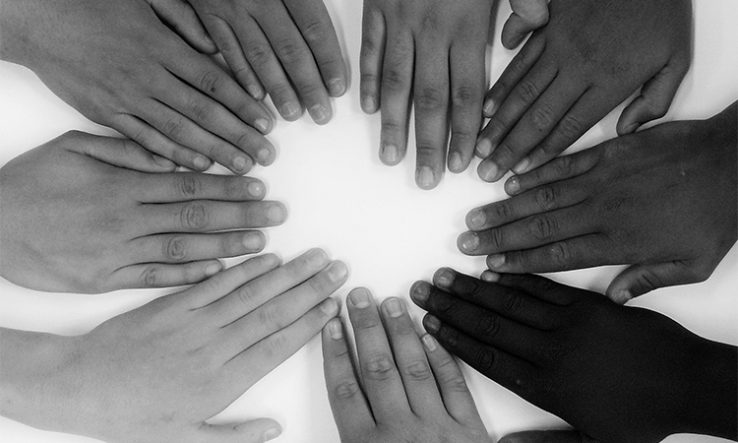
Sally Andrews says no one knows how to close the ethnicity gap in awarding degrees
The sector gap in degree awards between Black and white students increased slightly last year, up from 18.3 per cent in 2020-21 to 20 per cent in 2021-22. In practice, this means the gap is back to matching pre-pandemic levels. Meanwhile, the gap between the proportion of Black and white students who actually complete their studies has also increased.
Bear in mind that these figures don’t include those students who end their time at university without a classified degree award; at present we don’t have sector-wide data on these students, but anecdotal evidence suggests these are more likely to be Black students. This effectively means there is an increasing gap between the proportion of Black and white people in society with a first-class or 2:1 honours degree.
This isn’t for lack of trying; a lot of work is being done in this area, with numerous interventions undertaken throughout higher education. Providers across the UK are trialling various activities, such as decolonising reading lists, setting inclusive curricula and providing academic support for marginalised ethnicity students.
Transformation needed
English providers have a regulatory requirement to address gaps in degree awards and to report these activities to the Office for Students (OfS) within Access and Participation Plans (APPs). The lack of progress within this context suggests something isn’t quite working.
But no one knows what does work to achieve authentic and sustained progress, how to implement successful change, or how to do it at a scale that meets the challenge. What is needed will therefore not be a quick or easy fix—we’re talking about transformation in higher education.
It’s important to recognise that progress is being made. The number, frequency and reach of sector conversations is increasing, and the broad awareness and recognition of the scale of the ethnicity awarding gap is increasingly understood at institutional levels. Many Access and Participation Plan interventions aim to raise awareness of the gap within the staff body, and most are using or developing an infrastructure of learning analytics to help support internal knowledge and understanding of where inequalities are evident within the student journey; 10 years ago, racialised inequalities in higher education were rarely discussed. Yet so far this increased awareness isn’t translating into student outcomes.
Analysis of the problem
Transforming Access and Student Outcomes in Higher Education recently commissioned our Staffordshire Centre of Learning and Pedagogic Practice (SCoLPP) to explore what approaches higher education providers are adopting to address their own ethnicity degree awarding gap.
This involved analysing all 249 Access and Participation Plans from 2020/21 to develop a typology of the different approaches that providers are taking, as well as interviewing stakeholders from higher education providers in England to understand the landscape and experiences from those working in the space.
One problem is not the gap in degree awards, but the gaps between activist researchers, policymakers, those in student-facing roles and students themselves. There is little overlap between these groups, which gives little opportunity for everyone to work together, or to use each others’ expertise to best advantage.
Those active in this space are well versed in hidden curricula, power dynamics, systemic racism, and the fact that gaps in awards persist even after controlling for things like entry tariff and prior qualifications. We understand that pursuing the gap as a deficit model is unhelpful—that the onus isn’t all on our students to do better, the onus is on us.
Systemic inequalities
One problem is that the focus of access and participation plan working groups is on the success of access and participation plans rather than of students. This risks running into the problem of focusing on the metrics, rather than on the underlying issue—that systemic inequalities in higher education result in Black students being less likely to leave university with a first-class or 2:1 honours degree than their white peers.
We need to recognise not only what the gap is, but also why the gap is persistent. We need to do this without blame, without fear of retribution, without concern for reputation but with clear and consistent leadership and focus. The Office for Students’ new Equality of Opportunity Risk Register encourages providers to understand what the risk to equality of opportunity is, but without understanding the provider’s own underlying causes, interventions are likely to fall flat.
Possible solutions
There are two ways to proceed.
First, we really need to understand our data, to explore the swathes of information to which we have access, to understand where differences start to emerge and track backwards from there. Are there patterns in assessment types, content, mode of study? How might degree algorithms affect some students more than others? What are the processes and structures that contribute to inequality of opportunity?
We talk about the need to be data-informed, but when it comes to data analysis, we need to be context informed. Does the gap hinge on the apparently marginal difference between receiving a high 2:2 or a low 2:1 on key summative assessments?
We also need to implement realistic action plans and to facilitate those with the energy and passion to make change, including resourcing them.
Collectively, we need to be mindful that we don’t know what works. Part of this means recognising that sometimes the things we do and the way we do them won’t have the desired impact, and that’s okay as long as we act authentically, with an understanding of how we expect our actions to effect change. And as long as we learn from everything we do, regardless of how it turns out.
If we look after what matters—our staff and students—the metrics will look after themselves.
Sally Andrews is pedagogic projects development manager at the Staffordshire Centre of Learning and Pedagogic Practice (SCoLPP), Staffordshire University